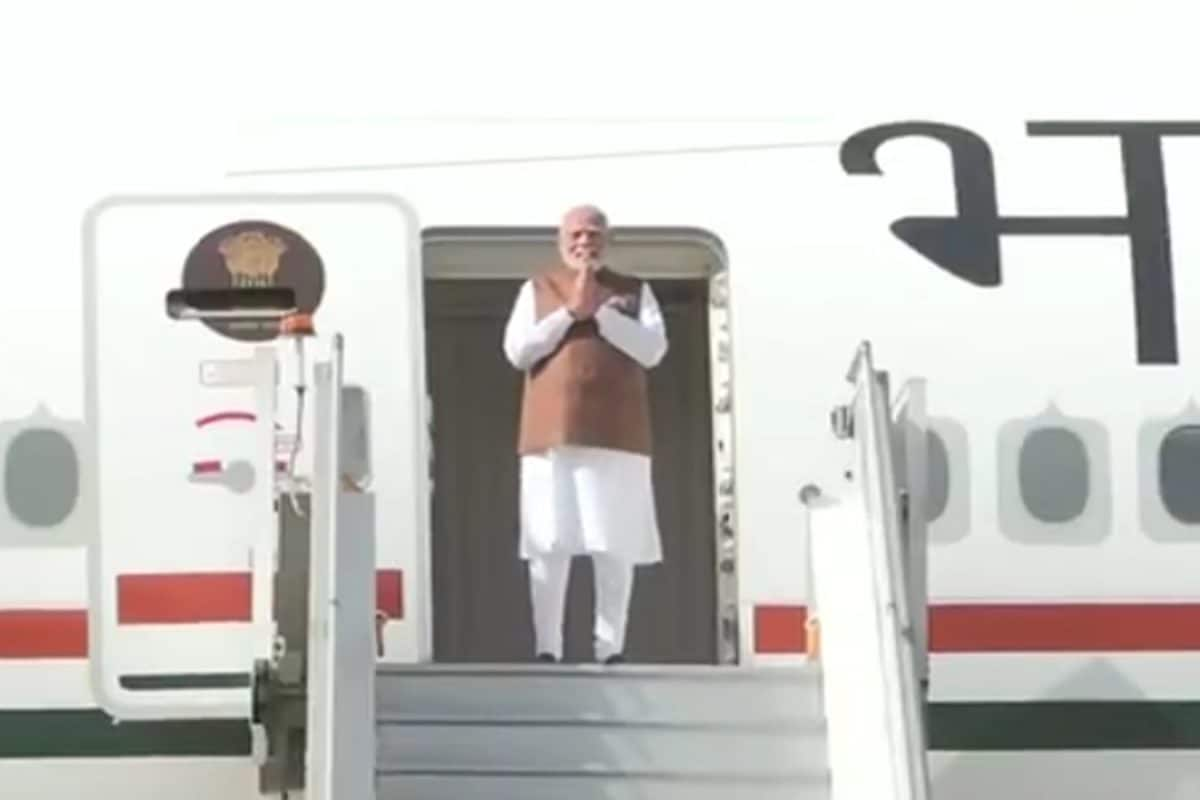PM Modi’s trip to Saudi Arabia must be seen in the larger backdrop of countries realigning their trade and supply chains away from China In his first trip to Saudi Arabia in six years, Prime Minister Narendra Modi is set to project the emphatic arrival of India in the West Asian theatre. The Gulf is an important region for India. For starters, it is part of India’s extended neighbourhood.
Second, it is a region where multipolar competition is at its zenith. Third, China has made significant inroads here, in the backdrop of Washington almost retreating from the region under Joe Biden’s presidency. However, with Donald Trump back in the White House, West Asia has re-emerged as the centrepiece of what promises to be a connected future for India, Gulf kingdoms and Europe.

Much of this has to do with Prime Minister Modi taking the lead on making the India-Middle East-Europe Corridor, or IMEC, a reality. Trump has imposed mind-boggling tariffs on China. His administration has its eyes set on challenging China every step of the way, including in West Asia.
To that end, Saudi Arabia finds itself in a tricky situation. For years, Riyadh has been “looking east" and increasing cooperation with Beijing. Trump’s return has undeniably complicated matters, with Washington increasingly scrutinising countries that maintain close relations with China – often with a punitive undertone.
INDIA: A SAFE AND RELIABLE BET FOR SAUDI ARABIA PM Modi’s trip to Saudi Arabia must be seen in the larger backdrop of countries realigning their trade and supply chains away from China. For New Delhi, this visit ushers in a new era of cooperation with Riyadh – easily the most influential player in West Asia. Beyond just China, Saudi Arabia, long aligned with traditional allies in the West, is recalibrating.
It’s looking outward, broadening its horizons beyond the usual suspects, and right now, India fits neatly into that evolving picture. India is a politically stable, economically dynamic and increasingly confident power on the global stage. Add to that, India represents the peak of multi-alignment, and the Saudis want to learn a few tricks of the game.
Modi knows this is a moment worth seizing – and he’s not wasting time. A unique confluence of factors is creating fresh space for India to step up: American Rebalancing: Washington is still an anchor in the region, but its gaze is increasingly shifting toward the Indo-Pacific and domestic priorities. That’s leaving room – and necessity – for Gulf nations to diversify their relationships.
At the same time, Washington under Trump is also pushing countries to delink from China. Saudi Arabia, which has invested heavily in the Chinese relationship recently, now needs to look for an alternative Asian partner. India is the one and only power that rivals China in both size and scale.
Saudi Arabia’s Vision 2030: Crown Prince Mohammed bin Salman’s bold plan to reinvent the Saudi economy depends on massive investments, advanced technology, and human capital. India offers all three in abundance. While in Saudi Arabia, PM Modi and Crown Prince Salman will sign agreements in the fields of space, energy, health, science and scientific research, culture and advanced technology.
Besides, comprehensive talks on security, defence, counter-terrorism and regional connectivity (IMEC) are also on the anvil. India is expected to impress upon the Saudis the necessity for getting IMEC up and running soon, given how this trade and logistics corridor can catalyse the growth of Neom – a futuristic city being built by Saudi Arabia, one which is considered Crown Prince MBS’ brainchild. A Region in Flux: With tensions simmering from Tehran to the Mediterranean, Saudi Arabia is keen to work with countries that can offer stability without bringing baggage.
India, with its non-aligned legacy and pragmatic diplomacy, checks that box. A Multipolar Moment: Gulf nations are no longer thinking in binaries. They’re engaging China, Russia, the EU – and India.
The shift toward a more distributed global power dynamic is very much underway, and New Delhi is playing the game with quiet confidence. FROM OIL BARRELS TO STRATEGIC BRIDGES: A RELATIONSHIP TRANSFORMED India and Saudi Arabia weren’t always this close. The early years were shaped by economic necessity – India needed oil, and millions of Indian workers supported the Saudi economy while sending crucial remittances back home.
Politically, relations were cordial, but often coloured by Saudi Arabia’s proximity to Pakistan. That began to shift in 2006 when King Abdullah visited Delhi, marking a reset. The Delhi and Riyadh Declarations opened doors to security cooperation and broader economic ties.
But the real acceleration came under Modi. PM Modi’s 2016 visit to Saudi Arabia brought urgency and ambition to the relationship. Then, in 2019, Modi and MBS co-chaired the Strategic Partnership Council, which has become a central platform to coordinate cooperation across a range of sectors.
Simultaneously, Saudi Arabia has distanced itself from Pakistan and has stood by actions aimed at strengthening India’s territorial integrity, including the revocation of Jammu and Kashmir’s special status. Today, the partnership is structured and strategic. Defence & Security: From joint military drills to counter-terrorism dialogues, the relationship now includes serious defence engagement.
India and Saudi Arabia are also set to unleash a new era of naval cooperation soon. Technology & Innovation: Cooperation in IT, AI, fintech, and space aligns perfectly with both nations’ goals – Saudi modernisation and India’s digital rise. Energy of the Future: Beyond crude oil, both countries have joint interest in renewables, solar energy, and green hydrogen.
In recent years, India has shed its dependency on Saudi oil, raking in large volumes of crude from Russia instead. This has necessitated both sides to reimagine their ties for a futuristic partnership. Mutual Investments: The Public Investment Fund (PIF) of Saudi Arabia is increasingly channelling capital into Indian infrastructure, tech, and green energy sectors.
Modi’s strong rapport with Crown Prince Mohammed bin Salman (MBS) has created a direct channel of communication, allowing agreements to be fast-tracked and misunderstandings swiftly resolved. At the same time, India is presenting itself as more than just a market – it’s pitching a full-spectrum partnership. From tech talent and infrastructure expertise to democratic stability, New Delhi is offering a compelling package that fits neatly with Riyadh’s Vision 2030 goals.
The relationship is no longer defined by oil transactions alone. India is positioning itself as an investment hub, a co-innovator, and a contributor to Saudi Arabia’s economic diversification. On the security front, joint naval drills, intelligence cooperation, and defence production talks show that India is increasingly viewed as a serious regional player.
Meanwhile, India’s backing of the India-Middle East-Europe Economic Corridor (IMEC), with Saudi Arabia at its heart, underscores its ambition to reshape trade connectivity. Perhaps most significantly, India’s rare ability to maintain cordial ties with regional rivals – from Israel and Iran to the UAE and Saudi Arabia – makes it a uniquely valuable partner in a geopolitically complex neighbourhood..
Politics

Straight Talk | Modi’s Saudi Reset: India Steps Up In A Multipolar West Asia

PM Modi’s trip to Saudi Arabia must be seen in the larger backdrop of countries realigning their trade and supply chains away from China















